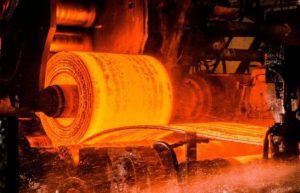
Beginning on Saturday, the government will no longer charge an export duty on steel and iron ore. This year in May, duty was imposed.
Export duties will not apply to iron ore lumps and fines with “less than 58 percent Fe,” according to a statement from the Finance Ministry late on Friday. The rate of duty will be 30% for lumps and fines of iron ore containing more than “58% Fe.”
Iron ore pellet exports will not be subject to any export taxes. Similar to this, there will be NO export taxes applied on pig iron and steel products (HS 7201, 7208, 7209, 7210, 7213, 7214, 7219, 7222 & 7227).
The government had imposed export tax charges in May that ranged from 15% for steel exports to about 50% for iron ore shipments (including concentrates).

Since then, domestic steel prices have been declining.
Additionally, import taxes on anthracite/PCI, coking coal, ferronickel, and those materials will be 2.5%; however, they will be 5% for coke and semi-coke.
These choices were made after India’s steel exports fell by the most this fiscal year, or 66 percent, to 360,000 tonnes in October due to weaker global demand and higher prices compared to rivals. According to data from the Steel Ministry, exports in October 2021 totaled 1.05 million tonnes.
Exports decreased by over 40% sequentially (October vs. September). All categories, including non-alloyed, alloyed, and stainless steel, experienced a dip. Since the start of this fiscal year in April, steel exports have been declining as geopolitical upheaval, recessionary fears, and sluggish demand have caused a downturn in the metal cycle.

Exports for the seven-month period (April to October) of the current fiscal year fell by 55% year over year to 3.9 mt (8.8 mt). In the meantime, imports during the time period increased significantly by 14% to 3.15 mt. The sector attributed lower export to higher duties.
For the second time in this fiscal year, the nation became a net importer of steel in October (imports exceeding exports). According to the information available, shipments of alloy and stainless steel increased significantly.
The category experienced the highest recent growth of 205% in October 2022, when 295,000 tonnes of goods were sold abroad. Sales in the same month (October 2021) the previous year were 97,000 tonnes.
Exports of alloy and stainless steel increased by 145% over the first seven months of current fiscal year, reaching 1.64 mt, compared to 0.7 mt during the same period last year. Non-alloyed steel exports, the important sector that has up to now driven export numbers, however, saw a 93% decrease to 65,000 tonnes last month.
In the same month (October) a year ago, exports totaled 958,000 tonnes. The category saw a 72% decrease y-o-y to 2.32 mt during the course of seven months.
Exports fell by 55% year over year to 3.9 mt for the first seven months of the current fiscal (8.8 mt). Meanwhile, imports increased significantly throughout the period by 14% to 3.15 mt.
The nation, incidentally, became a net importer of steel in October for the second time this fiscal.

















